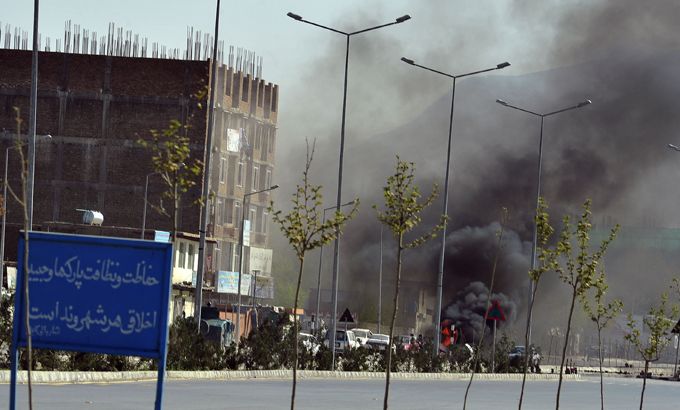
Who really controls Afghanistan?
We ask what the biggest attack on Kabul in 11 years reveals about the state of security in the country.
The sound of gunfire ricocheted across the Afghan capital, Kabul, on Sunday as suicide bombers launched a coordinated series of attacks.
|
“Those, like the Taliban, who are against peace and the Afghan people … we will continue to fight them and try to protect the Afghan people from this danger. At the same time we should look into sustainable ways of approaching those opponents and convince them to be reintegrated into the peace process.“ – Sediq Sediqqi, an interior ministry spokesman |
Foreign embassies, NATO headquarters and the Afghan parliament were among the targets hit in the biggest attack on Kabul since the fall of the Taliban 11 years ago.
The Taliban claimed responsibility for the attacks, which included near-simultaneous assaults in three other eastern cities, saying they were a response to recent claims by NATO officials that the insurgency was weak.
The fighting came to an end on Monday morning, leaving at least 47 people dead – the majority of them Taliban fighters, according to Afghan defence officials.
Critics say such well-coordinated assaults in a heavily guarded part of Kabul reveal intelligence failings.
|
“The Obama administration is hoping that they will sign a long-term strategic partnership agreement with the Afghans so that beyond 2014 there can be some small US force presence to support the Afghan government in extreme cases, and protect US interests. – Caroline Wadhams, a senior fellow at the Center for American Progress |
General John Allen, the US and NATO commander in Afghanistan, said Afghan government forces beat back the fighters without allied assistance and that its handling of the attacks showed it is capable of dealing with the security challenges it faces.
Kabul is under the control of Afghan security forces, protected by the so-called “ring of steel” checkpoints, but Sunday’s attacks show that the Taliban still has the capacity to mount large-scale nationwide assaults.
So what do these attacks say about the state of security in Afghanistan, and more importantly, the future of the country when foreign troops eventually leave? And who really controls Afghanistan?
Inside Story, with presenter Hazem Sika, discusses with guests: Sediq Sediqqi, an interior ministry spokesman; and Caroline Wadhams, a senior fellow at the Center for American Progress.
|
“I am enormously proud of how quickly Afghan security forces responded to [the] attacks in Kabul …. They were on scene immediately, well-led and well-coordinated …. They integrated their efforts, helped protect their fellow citizens and largely kept the insurgents contained.” General John Allen, the US and NATO commander in Afghanistan |
_________________________________________________________________________________________________
MOUNTING TENSIONS:
Recent provocations by US soldiers have increased the anger in Afghanistan:
- Pictures released online in January showed US marines abusing Taliban fighters. The video, posted on YouTube, showed men in uniform urinating on the dead bodies of three Afghans.
- In February, US soldiers burned copies of the Quran at a NATO base in the capital Kabul. The incident triggered riots across the country, more than 30 people were killed, including two US soldiers.
- In March, a US soldier went on a rampage and killed 16 civilians in Helmand province. The Taliban has since pulled out from reconciliation talks.